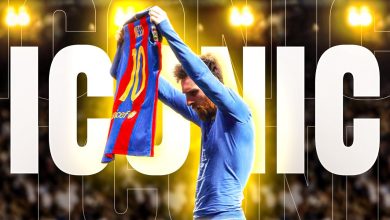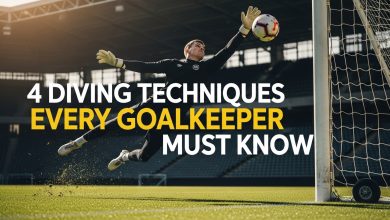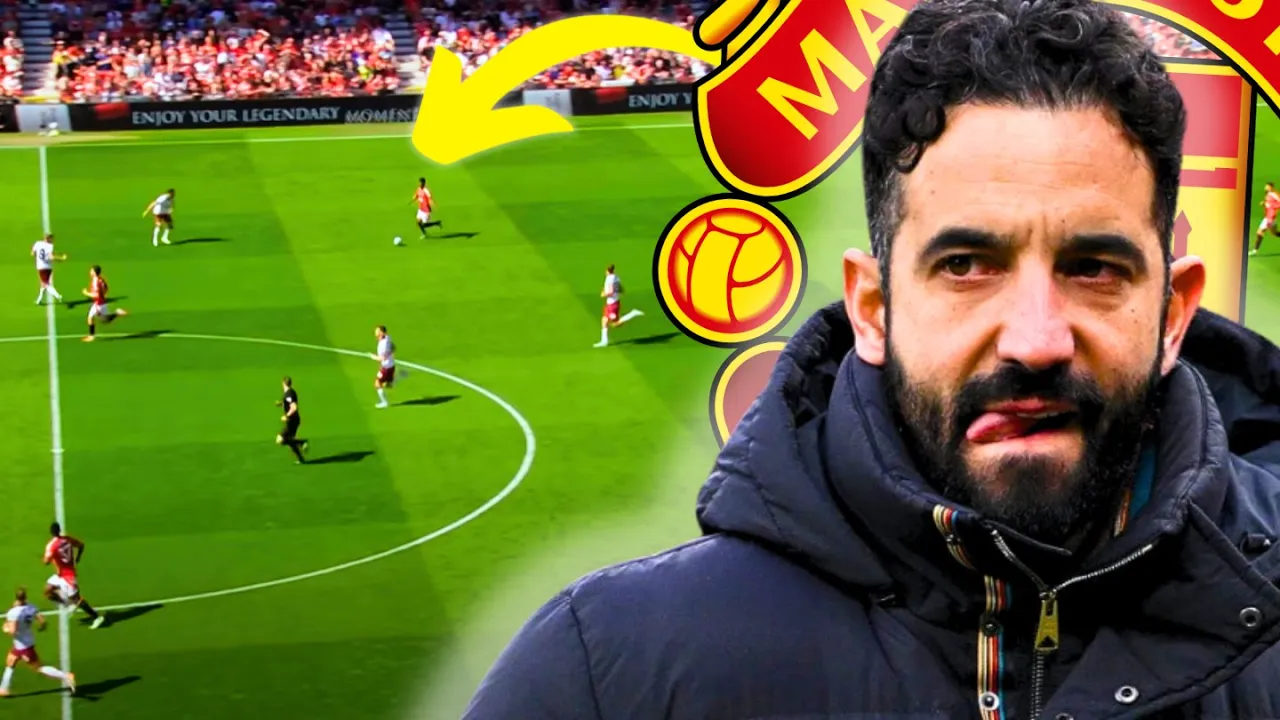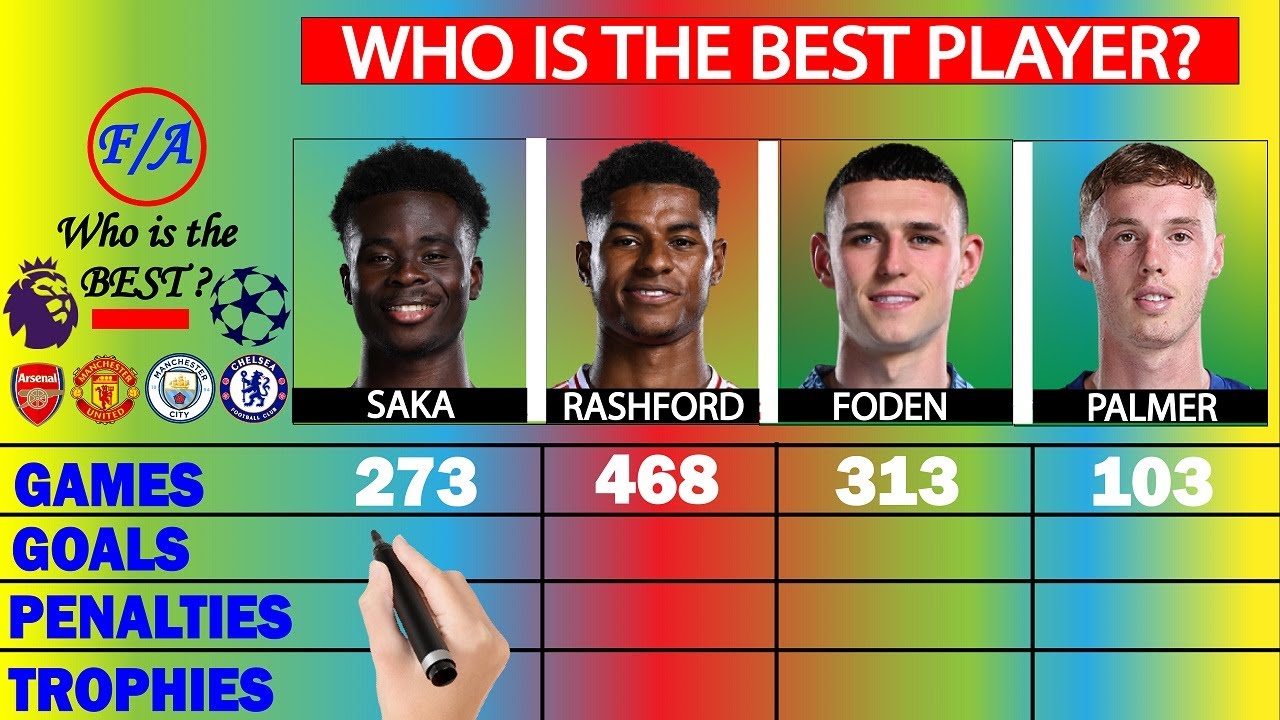The Entire History of Manchester City You Don’t Know
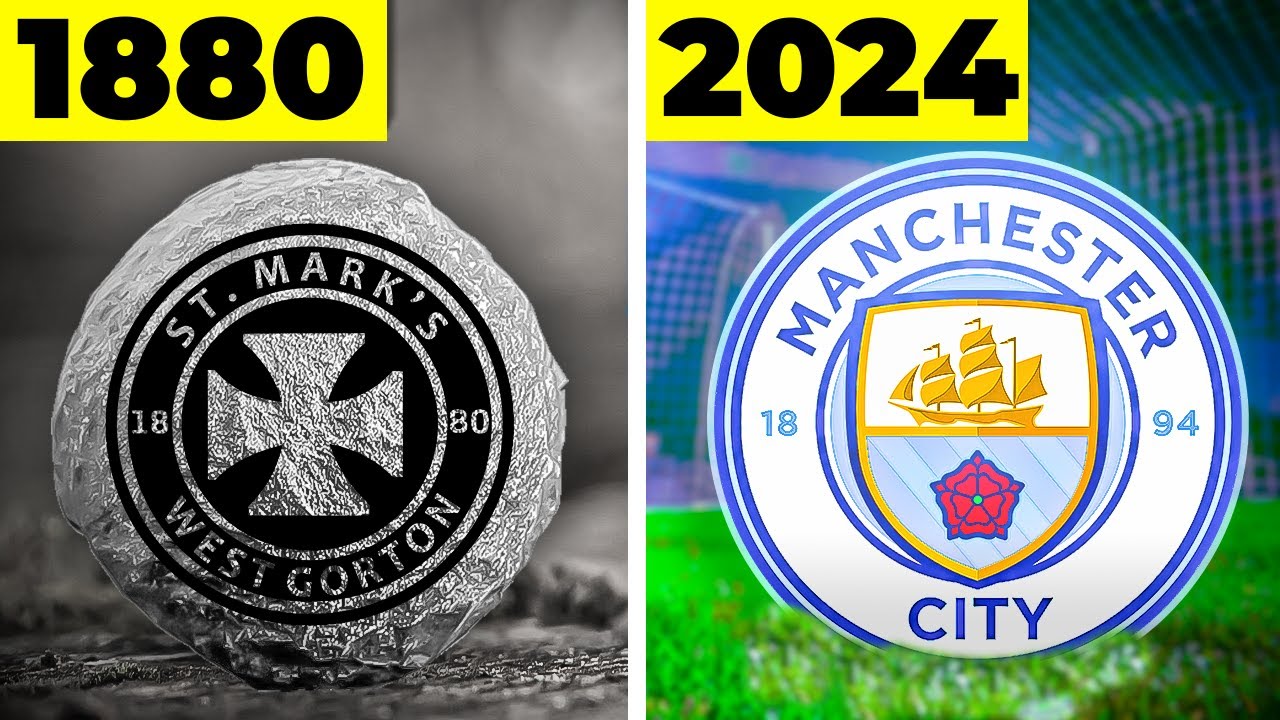
Some of you think that Manchester City was founded in 2008, but you can’t be further from the truth. What if we told you that Man City was founded years before Arsenal, Chelsea, Liverpool, Real Madrid and Barcelona? What if we told you that they won a trophy before Manchester United? Crazy, right? Well, trust us, it’s about to get even crazier as we dig into the entire history of Manchester City Football Club.
So, first, the name of the club wasn’t always Manchester City. They were founded as St. Mark’s in 1880 and they had that name because the club was founded by members of St. Mark’s Church of England in West Gorton, Greater Manchester. And you won’t believe the reason this club came about in the first place. Back then, there was a problem of alcoholism, unemployment and gang violence in the area.
So a couple of church wardens thought that the best way to curb that was to introduce new activities for young men in the area. And what better activity to attract men than football, right? Although the club was founded by a church, it was open to all the men in the area regardless of religion. So, officially, St. Mark’s was founded by two men named William Bisto and Thomas Goodbahir in 1880.
Anyway, as you’d expect from a newly founded club, they played some horrible football in their first year. They won just one game in the entirety of that season, so you could say it was a very slow start. But they would slowly begin to pick up the pace and expand their reach in the process, which caused them to change their name to Ardwick Association Football Club in 1887.
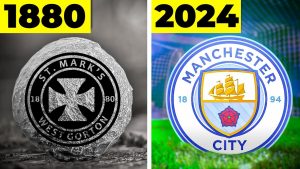
And then in 1894, the name was changed again, this time to one you’re familiar with, Manchester City Football Club. Maybe the name change started to bring them some luck, because five years after they started going by Manchester City, the club won their first ever trophy, the second division, and that earned them promotion to the first division, the highest level of English football.
So, at the turn of the 20th century, Manchester City were rubbing shoulders with the biggest clubs in the country. Then, in 1904, they won their first major trophy, the FA Cup, after they beat Bolton Wanderers in the final. That made them the first Manchester club to ever win a major trophy. Yes, they won a trophy before Manchester United. That season, they very nearly completed the double, but they narrowly missed out on the league title, finishing second in the first division.
Two years after that FA Cup win, 17 Man City players were suspended because of financial irregularity. The captain, Billy Meredith, was said to have bribed Aston Villa midfielder Alex Leak £10 to lose a match. Following his suspension by the club, he moved to Manchester United.
Man City used to play their home games on a ground called Hyde Road, at least until 1920, when a fire destroyed the main stand, which forced the club to move into a new stadium. In 1923, City moved to Main Road, and that was their home for 80 years. They were there until 2003, when they moved to the city of Manchester Stadium, which was built to host the 2002 Commonwealth Games.
We’ll get to all this later, but there’s still a lot more that happened in the 20th century that we haven’t told you about. So, in the 1930s, Man City started to enjoy more success. They reached back-to-back FA Cup finals, losing to Everton in 1933, and winning against Portsmouth in 1934.
Now, during that 1934 season, Manchester City broke a very interesting record. In the sixth round of the FA Cup, on 3 March 1934, they faced Stoke City at home, and 84,569 fans came out to Main Road to watch that game. That instantly became the highest home attendance any football club had ever recorded in the history of English football.
They held that record until 2016, when 85,512 fans came out to watch a UEFA Champions League group stage game, between Spurs and Bayer Leverkusen. But considering that game took place at Wembley Stadium, you could argue that Man City still hold that record. So, you see, that whole talk about Manchester City not having fans hardly holds water. They’ve had fans since black and white television.
Anyway, the 30s continued to be very successful for Man City. They won their first league title in 1937. But the craziest thing happened the following season, which you won’t believe. City got relegated, a season after they were crowned champions. And guess what? The season they got relegated, they scored more goals than any other club in the league.
Can you imagine that? The reigning champions got relegated after outscoring everyone else in the division. It was crazy. But if you think the 30s were an interesting period in Man City’s history, try the 50s. During this time, the club came up with a system known as the RevyPlan, named after their player, Don Revy.
He was a striker, but he would often come deep into the pitch, dragging the opposition centre-backs out of position, thus opening them up. In modern football, we’d call him a false nine. Anyway, the Revy plan helped City reach back-to-back FA Cup finals again. They lost to Newcastle in 1955, but they beat Birmingham in 1956.
And the 1956 final was so dramatic. With 17 minutes left on the clock, City’s goalkeeper Bert Trautmann was knocked unconscious after he collided with an opponent, Peter Murphy. Murphy’s knee hit Trautmann’s neck with some force, and the goalie needed instant treatment. Substitutions were not permitted back then, so if he was to go out, City would have to play the game with 10 men.
Trautmann bravely insisted on finishing the game, and City ended up winning 3-1. But guess what? Three days later, after some tests, it was revealed that Bert Trautmann had broken a bone in his neck during that collision. It was so insane, and that remains one of the craziest FA Cup finals there’s ever been.
But these periods of heights were very quickly followed by a period of lows for the citizens. They were relegated in 1963, and it felt like they were losing their fans. In 1965, they hit a record-low home attendance of 8,015, an insane drop from the record-breaking numbers some 30 years ago. But they would rise again, winning the FA Cup in 1969, and their first European trophy, the European Cup Winners’ Cup in 1970.
That year, Man City also won the League Cup, becoming only the second ever English Cup to win a European trophy and a domestic cup in the same season. Half a century later, they would also become the second English club to complete the European treble, second to their neighbouring rivals Manchester United.
History of Manchester City
And, you know, we could not just possibly talk about the history of Man City without talking about their neighbours. Doing better than United was always one of the aims of Man City, which is why City fans will always fondly remember the last game of the 1973-74 season. They played Man United, who needed a win to avoid relegation.
But City beat them 1-0, to send the Red Devils down to the second division, and the goal was scored by Dennis Long, who’d previously played for Man United. It remains one of the sweetest victories in the club’s history.
So, yeah, it’s safe to say that the 1970s were a good time for Man City. But what followed was an extended period of lows. In the 80s, the club had seven managers, none of whom was able to win any silverware. They got to the FA Cup final in 81, but lost to Spurs, and they got relegated from the top flight in 83 and 87.
They would come back up to the first division in 1989 and finish in the top five in 1991 and 92. And in 1992, they were one of the founders of the Premier League. The new league was supposed to mean a new life for them, but they continued to struggle.
They fought and struggled until they finally got relegated in 1996. After two seasons in the second tier of English football, they would get relegated yet again, becoming only the second winners of a European trophy to fall to the third tier of football in their country.
Then, in 1998, David Bernstein became chairman of the club, introducing some strict fiscal measures and revamped the team. His approach brought the club some success as they gained successive promotions in Bernstein’s first two seasons in charge, which meant that they were back in the Premier League in 2000. But they didn’t last again. In 2001, they were back in the championship.
Then Kevin Keegan was hired that summer, and he brought them back to the Premier League in 2002 and managed to keep them there. Under Keegan, City began to compete again. In the 2002-03 season, they beat Manchester United for the first time in 13 years and went on to qualify for Europe for the first time in 25 years, seeing significant progress.
Then, before the start of the 2003-04 season, the club moved out of Main Road after 80 years and moved into the City of Manchester Stadium, which is now known as the Etihad Stadium for sponsorship reasons. Then, in 2007, the club did something they’d never done before. They hired a non-UK coach for the first time in their history.
Swedish manager Sven-Jørgen Eriksson, who was also England’s first foreign manager, was hired to coach the Man City first team. He was the boss for just a year before he left by mutual consent. But he started the club’s culture of signing managers from overseas, one which would eventually lead to the best manager in the club’s history. We’ll get to that later, but first let us tell you about how this club’s life was turned around in the 2000s. In 2007, Thai
Businessman Thaksin Shinawatra took control of the club, but his assets were frozen in 2008, which immediately put the club in a very difficult financial situation. Then, in August 2008, the Abu Dhabi United group came, took
over, and immediately started pumping money into the club. In the same summer that they completed the takeover, they signed Robinho from Real Madrid for £32.5 million, thereby breaking the British transfer record fee. That right there was only a small sign of what was to come under this new ownership.
The very next summer, we saw them spend €147 million on seven players:
- Emmanuel Adebayor
- Gareth Barry
- Colo Toure
- Carlos Tevez
- Jolyon Lescott
- Roque Santa Cruz
- Adam Johnson
This was 2009, so it wasn’t common at all. But they still hadn’t returned to competing for trophies, so later that year, they hired Roberto Mancini as head coach. In his first season, he led them to fifth place in the Premier League, narrowly missing out on a Champions League spot.
In 2010, the spending continued as they spent over €183 million on seven players:
- Yaya Toure
- Eden Dzeko
- Mario Balotelli
- Jerome Boateng
- Alexander Kolorov
- David Silva
The next year, they added Sergio Aguero, Samir Nazeri, and Gael Clichy to that squad, and these guys would go on to form the core of Man City’s first-ever Premier League-winning squad. But before that trophy came, they won the FA Cup in 2011 to break their 35-year trophy drought.
They’d knocked Man United out in the semi-final on their way to that trophy, and that was the first time they’d knocked their neighbours out of a competition in 36 years. That season, they also qualified for the Champions League for the first time in 43 years.
It was obvious to everyone who was watching that Man City was now back to being a top club, and it was only a matter of time before they won their first Premier League trophy. But if you thought that the 2010-11 season was good, then the 2011-12 season would have blown you away. They beat Spurs 5-1 at White Hart Lane and famously beat Man United 6-1 at Old Trafford. It was that match that produced the now-famous “Why Always Me” celebration from Mario Balotelli.
But that was not the only time that season that City left their neighbours in tears. That season ended most dramatically. Ahead of the final matchday, City and United were locked on points, but City were sitting on top because they had a better goal difference. Therefore, all they needed to do was match United’s result on the last day, and they would be Premier League champions for the first time in their history.
But things weren’t exactly going their way that day. By the end of normal time, Man United had won their game while Man City were trailing 2-1. United’s fans and players had already started celebrating, but goals from Checo and Aguero in additional time turned things around in City’s favour, and they won their first ever Premier League title, and their first league title in 44 years in the craziest fashion ever.
Aguero’s winner in the 94th minute is regarded as one of the greatest goals in Premier League history, and some have even named it the greatest moment in the history of the league. It remains the only time in Premier League history that champions were decided on goal difference.
But the following season, City were not as good as we expected them to be. They finished 11 points behind Man United, got knocked out in the group stage of the Champions League, and were hit with a shocker in the FA Cup final, where they lost to a relegated Wigan Athletic.
All this led to Mancini’s sack, and he was replaced by Manuel Pellegrini, who won them another Premier League title and two League Cups, and led them to the semi-finals of the Champions League for the first time in their history. He also memorably signed Kevin De Bruyne, who would go on to become one of the greatest players in the club’s entire history.
But in 2016, Pellegrini was replaced by Pep Guardiola, and well, you can guess what followed. A period of insane dominance in England. Under the guidance of Guardiola, Manchester City became the first club to finish with 100 points in a single Premier League season, the first English club to complete a domestic treble, the first club to win four Premier League titles in a row, the second English club to complete a European treble, among other very impressive records.
But the story of Pep’s era is never complete without talking about the signings he made. He spent truckloads of money season after season to bring superstars to the Etihad, including Erling Haaland, Jack Grealish, John Stones, Josco Vardial, and Rodri, among others. But these millions brought Man City under a lot of scrutiny.
Rival fans accused them of ruining the sport by attempting to buy trophies, but more consequentially, they’dbeen investigated by UEFA and the Premier League for allegedly breaching financial fair play rules.
UEFA infamously banned them from European competitions in 2012. Fair play rules. UEFA infamously banned them from European competitions in 2020, but after the club appealed to the Court of Arbitration for Sports, the ban was overturned after discovering that some allegations were beyond the five-year limit for UEFA investigations, while the rest were unproven.
So, Man City were allowed to compete in the Champions League in the 2020-21 season, and they went on to reach the final for the first time in their history. They lost that game 1-0 to Chelsea, but they would finally get their hands on the trophy in 2023 after beating Inter Milan 1-0 in the final, to end a seven-year wait for the big ears in the Pep Guardiola era.
That win also completed the European treble for Man City that season, making them the second English club to achieve that after Man United did it in 1999. Interestingly, they beat Man United in the FA Cup final to complete that memorable treble, and that made it a tad bit sweeter.
In 2024, they became the first club to four-peat the Premier League, and they very nearly did the double-double, that is winning the FA Cup and the Premier League in back-to-back seasons.
